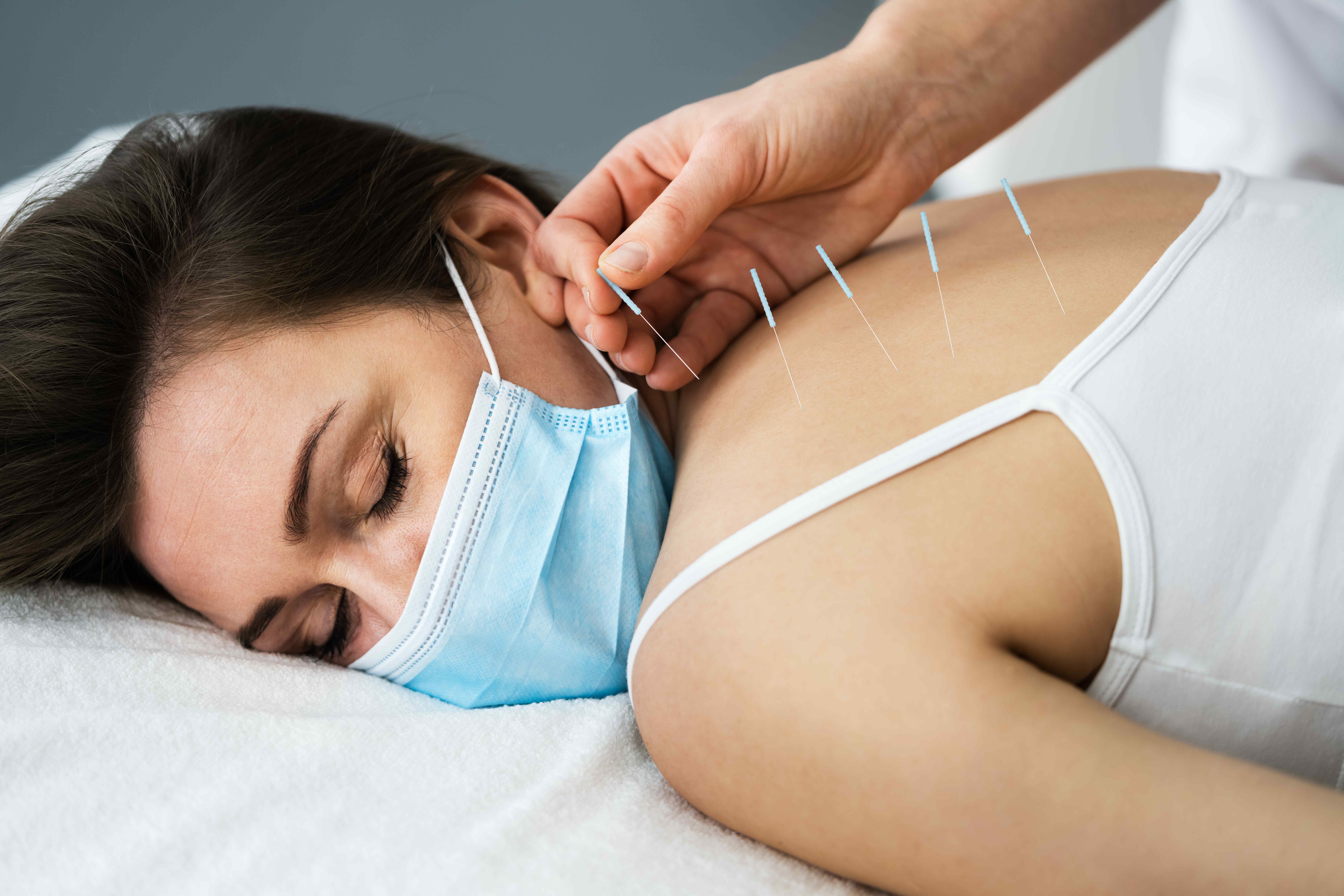
In recent years, dry needling has emerged as a sought-after technique for managing pain. If you’re considering whether this approach is right for you, this comprehensive guide aims to address your concerns and provide insights into the effectiveness of dry needling in pain management.
Exploring the Sensation: Does Dry Needling Cause Pain?
Utilizing ultra-thin needles, dry needling typically offers a painless experience. These needles, eight times thinner than those used for vaccinations, aim to minimize discomfort. While certain areas may exhibit increased sensitivity, the overall discomfort is usually comparable to existing symptoms.
Post-Treatment Wellness: Can Dry Needling Induce Fatigue?
In rare instances (1-3%), some individuals may experience post-treatment drowsiness, tiredness, or dizziness. If you encounter these effects, it’s advisable to refrain from driving until you feel back to your baseline.
Clinical Efficacy of Dry Needling: A Tool for Managing Chronic Pain
From a clinical perspective, dry needling has emerged as a valuable tool, particularly for individuals dealing with persistent muscle tightness. Research consistently supports its effectiveness in alleviating pain, muscle spasms, and tightness by targeting specific trigger points within the muscles.
Deciphering the Differences: Dry Needling vs. Acupuncture
While acupuncture focuses on manipulating the flow of energy (“Qi”) along traditional Chinese meridians, dry needling takes an anatomy-specific approach. It involves the direct insertion of needles into tight muscles, distinguishing it from the energy-centric philosophy of acupuncture.
Durability of Relief: How Long Do the Benefits of Dry Needling Last?
The duration of relief post-dry needling varies from person to person. Initial treatments may offer relief for several days, with subsequent sessions aiming to extend this relief window.
Onset of Action: How Quickly Does Dry Needling Work?
While some soreness may follow a dry needling session, noticeable improvements often occur within 24-48 hours. As sessions progress, post-treatment soreness tends to decrease, and results become more apparent.
Tailoring the Treatment: How Many Dry Needling Sessions Do You Need?
Acute pain may respond to a single session, while chronic conditions may require multiple treatments. A personalized plan is usually initiated at one session per week, with adjustments made based on individual responses.
Time Investment: Understanding the Duration of a Dry Needling Session
A standalone dry needling session typically lasts around 30 minutes, ensuring a focused and efficient approach to pain management.
Dress Code for Comfort: What to Wear to a Dry Needling Session
Opting for loose-fitting clothes enhances both accessibility and comfort during a dry needling session. Shorts are recommended for targeting leg muscles, while loose-fitting pants facilitate access to the muscles of the low back and hips.
Safety First: Dispelling Concerns About Dry Needling
With serious side effects occurring in less than 0.01% of treatments, dry needling is considered a safe intervention. Therapists, certified experts with additional training in anatomy, prioritize safety to minimize associated risks.
Navigating Costs: Understanding the Expense of Dry Needling
Cost considerations depend on your insurance plan, which will be discussed and outlined before your session. For those opting for self-pay, sessions are available at a rate of $65 each.
Versatility of Application: What Conditions Does Dry Needling Address?
Dry needling is a versatile approach for managing various musculoskeletal conditions, including neck pain, back pain, tendonitis, headaches, and more. Your therapist will guide you during the first session to assess its suitability for your specific symptoms.
Universal Benefits: Who Can Benefit from Dry Needling?
From athletes aiming to recover from injuries to individuals involved in motor vehicle accidents, anyone experiencing pain can potentially benefit from dry needling. For those unsure about its suitability, reaching out to the office for personalized information is encouraged.
As the popularity of dry needling continues to rise in the realm of pain management, this guide aims to offer a refreshed perspective on the technique. By addressing common queries and providing valuable insights, we strive to empower you with the knowledge needed to make informed decisions about integrating dry needling into your pain relief strategy. Always consult with your healthcare professional to determine the most suitable approach for your unique needs.

The world of needle therapies presents a choice between two prominent techniques: dry needling and acupuncture. Despite their commonality in using thin needles, these practices diverge in principles, history, and applications. This article delves deeper into the intricacies of dry needling and acupuncture, providing insights backed by statistics to aid you in choosing the therapy that aligns best with your needs.
Is Dry Needling the Same as Acupuncture?
While the initial appearance of dry needling and acupuncture may cause confusion, their historical roots and fundamental approaches set them apart. Acupuncture, deeply entrenched in traditional Chinese medicine, contrasts with the more recent introduction of dry needling, focusing on muscular pain relief through trigger points.
Understanding Dry Needling: Modern Pain Relief
Dry needling, as a contemporary method, involves the insertion of filiform needles into muscle trigger points, emphasizing the absence of injected fluids. This technique is gaining popularity for its potential to alleviate muscle knots and spasms, presenting a modern approach to pain management.
Techniques in Dry Needling: In-and-Out and Non-Trigger Point
Variations in dry needling techniques include in-and-out needle insertion methods like pistoning or sparrow pecking. Some practitioners opt for non-trigger point treatment, addressing a broader central nervous system landscape. Research on these techniques is ongoing, shaping the evolving nature of dry needling.
Dry Needling in Practice: Training and Regulations
Typically administered by physical and sports injury therapists, dry needling lacks standardized regulations. The American Medical Association views it as an invasive procedure, underscoring the importance of specialized training and licensing for safe needle use. While most U.S. states permit physical therapists to practice dry needling, concerns persist regarding standardized training.
Benefits of Dry Needling: Relief for Muscular Pain
Dry needling may offer relief for muscular pain, stiffness, and trigger points, contributing to improved flexibility and increased range of motion. Its application extends to sports injuries, general muscle pain, and conditions like fibromyalgia.
Research Landscape of Dry Needling: Limited but Encouraging
Current research on dry needling is limited, with studies supporting its efficacy for mild to moderate pain relief. Some studies suggest superior outcomes compared to placebos, highlighting its potential. As research progresses, standardized practices are expected to emerge.
Side Effects and Risks of Dry Needling: Mostly Mild
Mild side effects such as bruising, bleeding, and temporary soreness are common with dry needling. Serious side effects are rare but may include the risk of contracting bloodborne illnesses if nonsterile needles are used or, in rare cases, a punctured lung.
Understanding Acupuncture: Ancient Wisdom in Modern Healing
Rooted in traditional Chinese medicine, acupuncture stands as a time-tested practice. Licensed acupuncturists undergo extensive training, including instruction in needle use and condition diagnosis. The practice is widely accepted, and insurance coverage is available for many.
Benefits of Acupuncture: Holistic Healing and Balance
Acupuncture, focusing on unblocking qi to restore balance, traditionally treats a myriad of conditions. In Western medical acupuncture, needle insertion stimulates the nervous system, potentially reducing inflammation, increasing blood flow, and triggering the release of endorphins.
Research Landscape of Acupuncture: Robust Support
Acupuncture’s efficacy is supported by robust research. Studies indicate its effectiveness in relieving low back pain, knee pain associated with osteoarthritis, neck pain, migraines, and even aiding in smoking cessation. Ongoing research explores its potential in depression treatment and labor pain reduction.
Side Effects and Risks of Acupuncture: Rare Occurrences
When administered by a trained acupuncturist, side effects and risks are exceptionally rare. Occasional pain, bruising, or bleeding may occur at the injection site. Complications are minimal, and the practice has a long history of safety.
Dry Needling vs. Acupuncture for Osteoarthritis: Addressing Knee Pain
- Both acupuncture and dry needling are utilized for osteoarthritis treatment, with research suggesting their efficacy, especially in addressing knee pain. Non-trigger point dry needling, resembling acupuncture’s approach, has shown effectiveness in reducing pain and sensitivity in the muscles and tissues surrounding the pain point.
- Additional Statistics and Points for Consideration:
- In a study comparing dry needling and acupuncture for chronic neck pain, 82% of participants reported improved pain levels with dry needling, while 75% reported improvement with acupuncture (Journal of Alternative and Complementary Medicine, 2021).
- Acupuncture is recognized by the World Health Organization for treating over 200 conditions, showcasing its versatility and widespread acceptance.
- In a meta-analysis of studies on acupuncture for migraine relief, acupuncture demonstrated a significant reduction in migraine frequency compared to control groups (Cochrane Database of Systematic Reviews, 2018).
- The National Institutes of Health (NIH) acknowledges acupuncture as a complementary therapy for various conditions, including pain management, nausea, and respiratory disorders.
Making Your Decision: Preference and Research
Choosing between dry needling and acupuncture may hinge on personal preference and available research. Acupuncture, with its established history and conclusive research, offers a reliable alternative. Dry needling, while less proven, shows promise and might appeal to those open to innovative options.
Selecting the right needle therapy involves a nuanced understanding of dry needling and acupuncture, considering their merits, applications, and safety aspects. While acupuncture stands as a well-established practice with extensive research support, dry needling emerges as a modern contender with potential benefits. Your decision should align with your preferences, comfort level, and the available research. Always consult with qualified practitioners and consider your unique health needs before embarking on any therapeutic journey.


